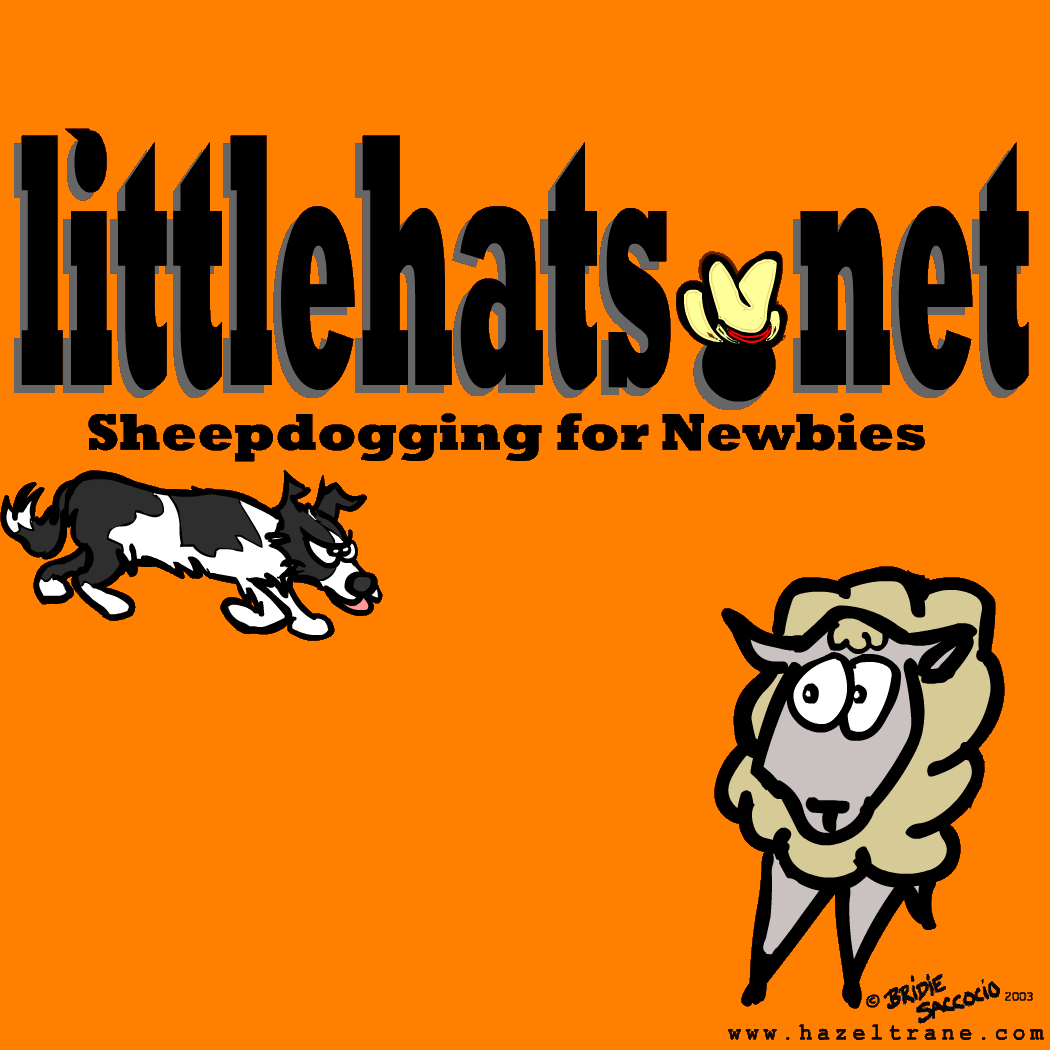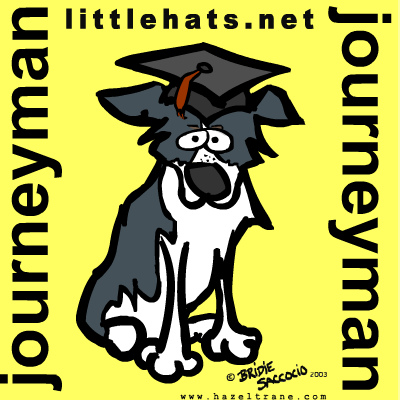


Choosing a Breed of Sheep
by Barbara Armata
Search This Site
Originally Published in the Nebca News
There are questions you should ask yourself before you chose a certain type of sheep. What level of training are you and your dog at? What specific training needs does your dog require? What facilities do you have? What are your goals for you and your dog? Are the sheep strictly for working dogs or being used for wool or meat?
Bernie and I started with nine crossbred Dorsets when we came across some Montadale sheep. We really liked this bred and envisioned a nice uniform flock of Montadales. We were raising lambs for market; producing an ideal type of meat lamb from this breed. As we moved from the NN to PN to Ranch, the type of sheep we were seeing on the trial field was changing. Katahdins were becoming a common sight. That's when we realized our dogs had no idea [nor us] how to handle this type of sheep. Our needs changed so we started adding different types of working sheep to our flock.
In this article, I will describe the breeds I have been in contact with, their characteristics and how I incorporate this into training. Remember these are generalizations and not true for all sheep of a specific breed. A lot depends on how the sheep have been raised, handled and their treatment by dogs.
The best breed, in my opinion, for starting dogs is the Dorset or Dorset cross. This breed is not very large, tends to be more complacent, and, therefore, will become "dogged" relatively quickly. Young dogs need quiet, agreeable sheep that will build confidence. This type will also help the Novice handler, as they will give them time to think about what is needed by them in directing the dog.
When looking for "dog broke" sheep, it's best to inquire around at dog trials. If you go to a sheep farm, their opinion of "dog broke" may be that a dog has moved the sheep around, most likely, as a large group. That's a big difference from the sheep I described above!
Katahdins have become an extremely popular breed because they don't require shearing. Unless you have a wool breed and process the fiber, shearing is an added expense with no benefit. This breed tends to be higher headed; their faces narrower with the eyes set more to the side of the face. A dog has to be subtler in its movements, especially when changing direction. The dog does not need to come up towards the head as much to produce a reaction. Katahdins may run but are not necessarily skittish. I like to use Katahdins to teach driving as they move forward in a straighter path without having to be pushed. As the dog gains confidence, I will switch to a heavier breed to teach more push in the drive.
Cheviots and Montadales are similar in their way of acting. Montadales are Cheviots crossed with Columbias. They can be squirrelly like Cheviots only a bigger and maybe slower. These sheep will also test dogs if there is any weakness perceived, but most will bolt rather than stand. This will teach a dog not to push too hard but to be ready to cover if the sheep do try to get away. Another aspect is that your dog will learn its ok if the sheep run while driving--it's possible to drive in high gear! Not ideal of course, but sometimes driving at some trials you need the "sling shot" method to make the panels!
A breed I've taken a liking to is the Scottish Blackface. Scotties are not very big but make up for that in boldness. I've found they rarely do anything stupid to themselves (such as crash fences!). Scotties as a breed do not have a strong flocking instinct. When used as a group, they will teach a dog to watch each one, not just the lead sheep. The dog will also learn how to push when driving, not just follow. This breed is the quickest at figuring out if a dog has any weakness. A dog can build toughness, with the handler's help, by dealing with these sheep.
Bernie and I started with nine crossbred Dorsets when we came across some Montadale sheep. We really liked this bred and envisioned a nice uniform flock of Montadales. We were raising lambs for market; producing an ideal type of meat lamb from this breed. As we moved from the NN to PN to Ranch, the type of sheep we were seeing on the trial field was changing. Katahdins were becoming a common sight. That's when we realized our dogs had no idea [nor us] how to handle this type of sheep. Our needs changed so we started adding different types of working sheep to our flock.
In this article, I will describe the breeds I have been in contact with, their characteristics and how I incorporate this into training. Remember these are generalizations and not true for all sheep of a specific breed. A lot depends on how the sheep have been raised, handled and their treatment by dogs.
The best breed, in my opinion, for starting dogs is the Dorset or Dorset cross. This breed is not very large, tends to be more complacent, and, therefore, will become "dogged" relatively quickly. Young dogs need quiet, agreeable sheep that will build confidence. This type will also help the Novice handler, as they will give them time to think about what is needed by them in directing the dog.
When looking for "dog broke" sheep, it's best to inquire around at dog trials. If you go to a sheep farm, their opinion of "dog broke" may be that a dog has moved the sheep around, most likely, as a large group. That's a big difference from the sheep I described above!
Katahdins have become an extremely popular breed because they don't require shearing. Unless you have a wool breed and process the fiber, shearing is an added expense with no benefit. This breed tends to be higher headed; their faces narrower with the eyes set more to the side of the face. A dog has to be subtler in its movements, especially when changing direction. The dog does not need to come up towards the head as much to produce a reaction. Katahdins may run but are not necessarily skittish. I like to use Katahdins to teach driving as they move forward in a straighter path without having to be pushed. As the dog gains confidence, I will switch to a heavier breed to teach more push in the drive.
Cheviots and Montadales are similar in their way of acting. Montadales are Cheviots crossed with Columbias. They can be squirrelly like Cheviots only a bigger and maybe slower. These sheep will also test dogs if there is any weakness perceived, but most will bolt rather than stand. This will teach a dog not to push too hard but to be ready to cover if the sheep do try to get away. Another aspect is that your dog will learn its ok if the sheep run while driving--it's possible to drive in high gear! Not ideal of course, but sometimes driving at some trials you need the "sling shot" method to make the panels!
A breed I've taken a liking to is the Scottish Blackface. Scotties are not very big but make up for that in boldness. I've found they rarely do anything stupid to themselves (such as crash fences!). Scotties as a breed do not have a strong flocking instinct. When used as a group, they will teach a dog to watch each one, not just the lead sheep. The dog will also learn how to push when driving, not just follow. This breed is the quickest at figuring out if a dog has any weakness. A dog can build toughness, with the handler's help, by dealing with these sheep.